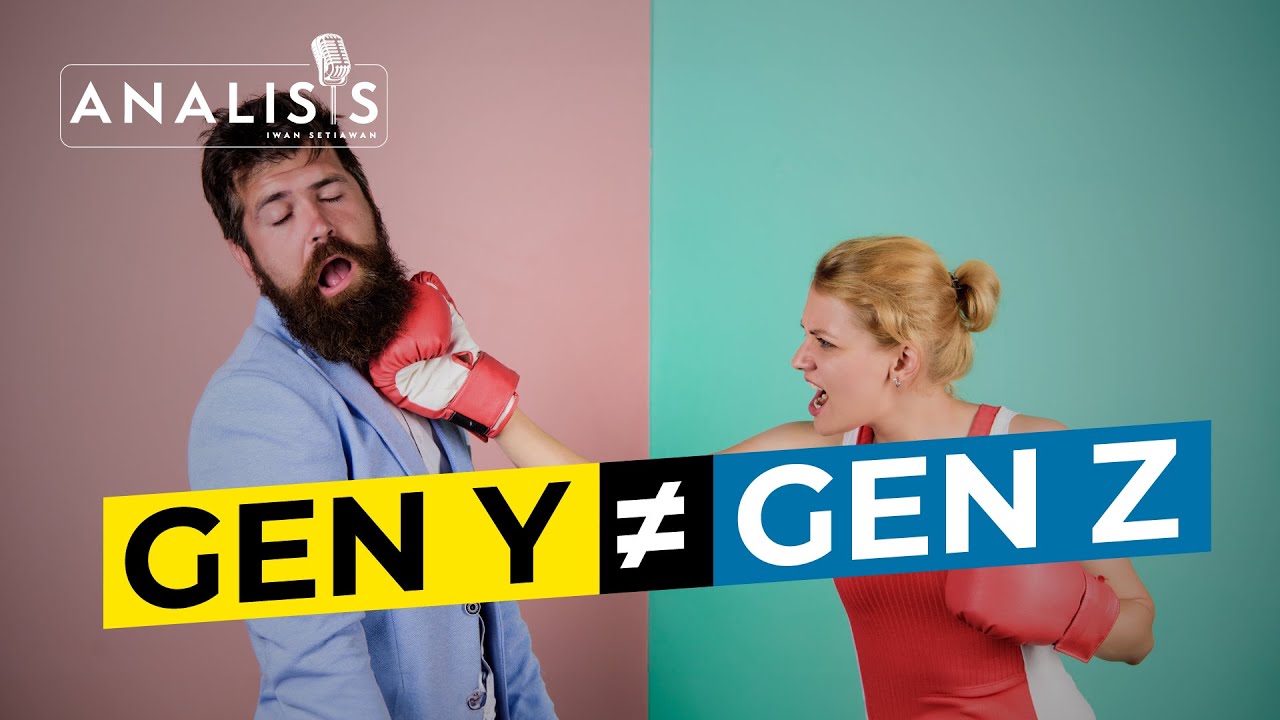Gen Z: Generasi Serba Instan dan Tidak Mau Rugi #IntrigueRK
Summary
TLDRThe video discusses the unique characteristics of Generation Z as they enter the workforce, highlighting their sensitivity, lack of traditional loyalty, and preference for convenience. It contrasts them with older generations, explaining how technological advancements, like on-demand services and machine learning, have shaped their consumer habits and workplace behaviors. The speaker emphasizes the importance of understanding the 'on-demand' and 'switching' cultures that define Gen Z, where instant access to services reduces commitment to brands, jobs, or even relationships. The video also explores how businesses can adapt to these changes in order to attract and retain talent from this generation.
Takeaways
- 💼 Generation Z (Gen Z) is entering the workforce, but there are challenges in understanding their behavior, especially for older generations.
- 🐱 Gen Z prioritizes personal issues differently, as seen in a story where an employee skipped work due to a sick cat, confusing older colleagues.
- 💡 Gen Z is more sensitive, having grown up with protections like child rights organizations and without harsh initiation rituals in schools.
- 🚪 Gen Z tends to change jobs quickly and is perceived as less loyal, often leaving jobs within months or even weeks.
- 🛍️ The 'on-demand culture' is driving consumption patterns, with technology allowing businesses to predict and cater to consumer needs instantly.
- 🧠 Companies now focus on behavioral segmentation instead of just demographic or psychographic data, using algorithms to personalize marketing.
- 🖥️ Gen Z prefers access over ownership, seen in their usage of services like ridesharing instead of buying cars and streaming instead of owning music.
- 🏃♂️ The 'switching culture' of Gen Z means they are less loyal to brands and products, quickly moving to alternatives when dissatisfied.
- 📉 Lower switching costs in many sectors, including real estate and consumer products, make it easier for Gen Z to change choices rapidly.
- 🎓 Education is also affected by on-demand and switching cultures, with Gen Z turning to AI tools, YouTube, and other online resources over traditional methods.
Q & A
What challenges do senior employees face in understanding Generation Z in the workplace?
-Senior employees often find it difficult to understand Generation Z's values and priorities. For instance, while older generations may expect traditional reasons for taking a day off, such as illness, a Generation Z employee might cite personal reasons like a pet being sick. This reflects a shift in values, where personal matters are equally important.
Why is Generation Z perceived as less loyal in the workplace?
-Generation Z is seen as less loyal because they tend to switch jobs quickly, sometimes leaving after just a few weeks or months. They prioritize personal satisfaction and tend to leave jobs if they don't feel fulfilled, instead of focusing on long-term career development.
How has the pandemic affected the behavior of Generation Z in the workplace?
-The pandemic has made Generation Z more sensitive and less able to express their emotions, often leading to quick decisions like quitting a job. The isolation and digital connectivity during the pandemic also shaped their need for instant solutions and less tolerance for traditional work structures.
What is on-demand culture, and how does it relate to Generation Z?
-On-demand culture refers to the ability to instantly access products or services whenever needed, often driven by technology and data. Generation Z thrives in this environment, where companies predict their needs and provide personalized recommendations through data-driven algorithms.
How has technology changed marketing strategies in the context of on-demand culture?
-Marketing has shifted from traditional demographic or psychographic segmentation to behavioral segmentation, where companies use data to understand consumer behavior. Algorithms now provide personalized recommendations based on digital footprints, often even before consumers realize what they need.
What is switching culture, and how does it influence Generation Z's consumer habits?
-Switching culture refers to the ease with which people can change brands or products due to low switching costs. Generation Z, who are accustomed to many choices and instant access, often switch products or services quickly, showing little brand loyalty.
How has on-demand culture affected traditional concepts of ownership among Generation Z?
-Generation Z prioritizes access over ownership. For example, instead of owning a car, they may prefer using ride-sharing services. This behavior is reflected in their reluctance to commit to owning big items like homes or vehicles, opting instead for experiences and flexibility.
How does Generation Z's approach to music differ from previous generations?
-While older generations would physically buy music (e.g., CDs or cassettes), Generation Z accesses music instantly through streaming services like Spotify, where personalized playlists are curated based on their listening habits, saving them time and effort in choosing songs.
How does personalized marketing play a role in Generation Z's consumer experience?
-Personalized marketing uses algorithms and data analysis to tailor products and services to individual consumers. For Generation Z, this means that they are often presented with products that suit their specific preferences, creating a more engaging and customized shopping experience.
What role does machine learning play in on-demand culture and marketing for Generation Z?
-Machine learning is central to on-demand culture, enabling companies to capture and analyze consumer data to predict needs and offer personalized solutions. For Generation Z, this technology ensures convenience and speed, two key factors in their consumer behavior.
Outlines

This section is available to paid users only. Please upgrade to access this part.
Upgrade NowMindmap

This section is available to paid users only. Please upgrade to access this part.
Upgrade NowKeywords

This section is available to paid users only. Please upgrade to access this part.
Upgrade NowHighlights

This section is available to paid users only. Please upgrade to access this part.
Upgrade NowTranscripts

This section is available to paid users only. Please upgrade to access this part.
Upgrade NowBrowse More Related Video
5.0 / 5 (0 votes)





